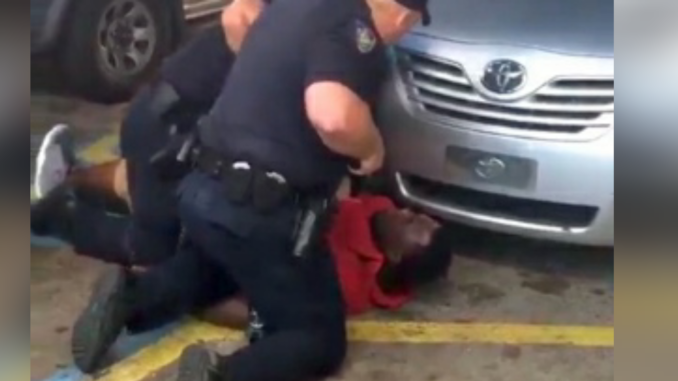
A month after Alton Sterling was shot and killed while pinned down by Baton Rouge police officers, who accused Sterling of resisting, Louisiana Governor John Bel Edwards made resisting police a felony hate crime. In what’s being called the “Blue Lives Matter Law”, St. Martinville Police Chief Calder Hebert says the public and police need to work together… to help protect the police.
Huh?
Via KATC:
The state’s new “Blue Lives Matter” law is already being used here in Acadiana. In the last year, Louisiana became the first state to offer hate crime protections to police officers.
St. Martinville Police Chief Calder Hebert hopes the law will not only save lives, but make offenders think twice before resisting arrest.
“We don’t need the general public being murdered for no reason and we don’t need officers being murdered for no reason. We all need to just work together,” said Hebert.
Hebert is very familiar with the new hate crime law, having already enforced it since it took effect in August.
“Resisting an officer or battery of a police officer was just that charge, simply. But now, Governor Edwards, in the legislation, made it a hate crime now,” said Hebert.
Under the new law, Hebert says any offender who resists, or gets physical, with an officer can be charged with a felony hate crime.
For example, if someone who’s arrested for petty theft, a misdemeanor, tries to assault an officer, that individual can be charged with a hate crime. A hate crime is considered a much more serious offense, with serious consequences.
“We need the police and the public to work together. The policemen have a job. The public has the job of helping the police. And if someone happens to be involved in criminal activity. Let the courts handle it. Don’t resist physically,” said Hebert.
If the state’s new law proves successful, Hebert said he hopes the rest of the country will adopt similar laws.
“These guys go out there everyday and the main goal is to protect the public and go home at the end of the day. This is one step in making that happen. Hopefully, the rest of the nation follows suit,” said Hebert.
The irony of this law is that police aren’t being killed as much as they are doing the killing.
“There’s a widespread perception in the American public, and particularly within law enforcement, that officers are more threatened, more endangered, more often assaulted, and more often killed than they have been historically,” says Seth Stoughton, a law professor at the University of Southern Carolina and former policeman, told by BBC.
“I think it’s a very strong perception. People truly believe it. But factually, looking at the numbers, it’s not accurate,” he says.
The highest number of police fatalities at the hands of civilians were around 115 officers killed per year. This was in 1970-1980. That number has steadily decreased, with only 7.3 out of every 100,000 officers killed per year as of 2013. As of December 2016, only 64 police officers were killed in the U.S. in 2016, a decrease over the last 5 years, according to CNN.
Ironically, 963 civilians were murdered by police officers in 2016. That’s a little less than the 991 that were killed the year before. Black Americans are 2.5 times more likely to be shot by police than White civilians.
97% of officers responsible for murdering civilians in 2016 were never charged with a crime.
And yet, there are no laws protecting civilians from police.
